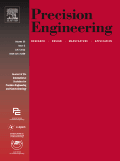
PRECISION ENGINEERING-JOURNAL OF THE INTERNATIONAL SOCIETIES FOR PRECISION ENGINEERING AND NANOTECHNOLOGY
Scope & Guideline
Innovative Insights: Shaping the Future of Precision Engineering
Introduction
Aims and Scopes
- Precision Manufacturing Techniques:
The journal emphasizes innovative manufacturing techniques such as ultra-precision machining, microfabrication, and advanced machining processes that enhance the quality and functionality of engineered products. - Nanotechnology Applications:
A core area of focus is the application of nanotechnology in various fields, including sensors, materials, and biomedical devices, showcasing how nanoscale innovations can lead to significant performance improvements. - Sensor Development and Characterization:
Research on the development and characterization of advanced sensors, including piezoelectric and electromagnetic sensors, is prominently featured, illustrating their applications in monitoring and measurement. - Materials Science Innovations:
The journal extensively covers advancements in materials science, particularly the development of new composite materials and nanostructured materials, which are critical for enhancing performance in various engineering applications. - Multidisciplinary Approaches:
The journal encourages multidisciplinary approaches, integrating insights from physics, engineering, and biology, to solve complex problems in precision engineering and nanotechnology.
Trending and Emerging
- Advanced Sensor Technologies:
There is a significant increase in research focused on advanced sensor technologies, including wearable sensors and biosensors, driven by the demand for real-time monitoring and health applications. - Nanomaterials and Nanostructures:
The exploration of nanomaterials and their unique properties has surged, particularly in applications related to energy storage, electronics, and biomedical fields, indicating a strong trend towards harnessing nanoscale innovations. - Microsystems and Microfluidics:
Research on microfluidic systems and microsystems has expanded, reflecting their importance in biomedical applications, chemical analysis, and environmental monitoring. - Smart and Adaptive Materials:
The development of smart materials that respond to environmental stimuli is emerging as a key focus area, indicating a trend towards creating materials with enhanced functionalities for diverse applications. - Sustainability in Precision Engineering:
An increasing emphasis on sustainable practices and materials in precision engineering is evident, reflecting broader global trends towards environmentally friendly manufacturing and materials usage.
Declining or Waning
- Traditional Machining Processes:
There has been a noticeable decrease in publications focusing on traditional machining processes as research increasingly shifts towards more advanced, automated, and precision techniques. - Basic Material Characterization Techniques:
Papers centered on fundamental characterization methods for materials have diminished, possibly due to a growing emphasis on integrated, multi-functional characterization approaches. - Conventional Sensor Technologies:
The interest in conventional sensor technologies appears to be waning, as research pivots towards more innovative and advanced sensor systems that leverage nanotechnology. - Low-Temperature Applications:
Research on low-temperature applications and technologies has been less prominent, suggesting a possible shift towards high-performance applications that require more sophisticated temperature management. - Basic Theoretical Studies:
There is a decline in purely theoretical studies without practical applications, as the journal increasingly favors empirical research with demonstrable technological advancements.
Similar Journals

Advanced Materials Technologies
Unleashing Potential in Materials EngineeringAdvanced Materials Technologies is a leading scholarly journal published by WILEY, dedicated to the rapidly evolving fields of materials science and engineering. With an impressive 2023 impact factor reflected in its Q1 ranking in Industrial and Manufacturing Engineering, Mechanics of Materials, and a notable position within the materials science community, this journal stands as a premier platform for disseminating innovative research and technological advances. The journal encompasses a diverse range of topics, from the fabrication and characterization of advanced materials to their applications in various industries, thus fostering interdisciplinary collaboration among researchers, professionals, and students. Since its inception in 2016 and looking forward to 2024, Advanced Materials Technologies continues to provide unparalleled access to high-quality, peer-reviewed articles, ensuring that it remains a vital resource for anyone involved in the design and optimization of advanced materials.

Journal of Sensors and Sensor Systems
Elevating Standards in Sensor Systems ResearchThe Journal of Sensors and Sensor Systems, published by COPERNICUS GESELLSCHAFT MBH, is a prominent open-access journal that has been contributing to the fields of electrical and electronic engineering and instrumentation since its inception in 2012. With an ISSN of 2194-8771 and an E-ISSN of 2194-878X, this journal provides a critical platform for researchers, professionals, and students to disseminate innovative findings and advancements in sensor technology and system applications. As of 2023, it holds a respectable ranking in the third quartile for Electrical and Electronic Engineering and in the fourth quartile for Instrumentation, as per Scopus classifications. The journal is based in Göttingen, Germany, and emphasizes the importance of open access for broad dissemination of knowledge. By fostering interdisciplinary research and collaboration, The Journal of Sensors and Sensor Systems plays an essential role in advancing sensor technologies, ultimately driving progress in various scientific and engineering domains.

Micro and Nano Systems Letters
Bridging Science and Engineering in Micro and Nano SystemsMicro and Nano Systems Letters, published by SPRINGERNATURE, is a prominent peer-reviewed journal dedicated to advancing the field of micro and nanosystems, with a special focus on biomaterials and biomedical engineering. Since its inception in 2013, this Open Access journal has provided a vital platform for researchers and practitioners to disseminate innovative findings and share insights that contribute to the growing body of knowledge in these rapidly evolving disciplines. With a remarkable impact reflected in its Q1 quartile rankings in both biomaterials and biomedical engineering, and impressive Scopus ranks placing it within the top tier of its fields, Micro and Nano Systems Letters plays a critical role in fostering collaboration and knowledge exchange among scientists and engineers worldwide. The journal is accessible globally, ensuring that research is widely disseminated and impacting a diverse audience to drive progress in technology and healthcare solutions.
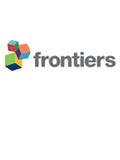
Frontiers in Materials
Empowering Knowledge Exchange in Materials Science.Frontiers in Materials, an esteemed journal published by FRONTIERS MEDIA SA, is a leading platform in the field of Materials Science, with a notable impact factor placing it in the Q2 category of its discipline as of 2023. Since its establishment as an Open Access journal in 2014, it has fostered considerable academic exchange, allowing researchers from around the globe to share their innovative findings and insights. Based in Lausanne, Switzerland, this journal not only emphasizes high-quality peer-reviewed articles but also prioritizes rapid dissemination of research, as evidenced by its commendable Scopus ranking of #62 out of 196 in Materials Science (miscellaneous). By consistently striving to bridge the gap between academia and practical applications, Frontiers in Materials serves as an invaluable resource for researchers, professionals, and students seeking to delve into cutting-edge advancements and transformative applications in materials science.
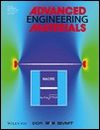
ADVANCED ENGINEERING MATERIALS
Advancing Knowledge in Engineering MaterialsADVANCED ENGINEERING MATERIALS is a leading journal dedicated to the field of materials science, particularly within the realm of condensed matter physics. Published by WILEY-V C H VERLAG GMBH in Germany, this esteemed journal has been a crucial platform for disseminating cutting-edge research since its inception in 1999. With an impressive impact factor and ranked in the top quartiles of its categories, it boasts a Q1 ranking in Condensed Matter Physics and a Q2 rank in related materials science fields as of 2023. ADVANCED ENGINEERING MATERIALS serves a diverse readership, including researchers, industry professionals, and students, striving to advance the understanding and application of innovative materials. Frequent contributions to this journal help bridge theoretical advancements with practical applications, fostering a vibrant academic and industrial dialogue. Although currently not an open-access journal, the insights shared within its pages are pivotal for anyone engaged in the dynamic sectors of engineering and material sciences.
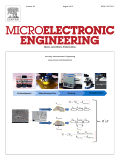
MICROELECTRONIC ENGINEERING
Connecting Knowledge with Innovation in the World of MicroelectronicsMICROELECTRONIC ENGINEERING is an esteemed journal published by Elsevier, focusing on the rapidly evolving fields of microelectronics and nanotechnology. It encompasses a wide array of topics, including atomic and molecular physics, condensed matter physics, and the engineering aspects of electronic, optical, and magnetic materials. With its impressive impact factor and recognition as a Q2 journal in several categories, it provides an invaluable platform for researchers and professionals to disseminate their groundbreaking findings. The journal has been instrumental in advancing our understanding and application of microelectronic technologies since its inception in 1983. Currently ranked highly within various specialized categories in Scopus, MICROELECTRONIC ENGINEERING offers targeted access to cutting-edge research, fostering innovation and collaboration in the world of electronic engineering and materials science. As we look towards the future, with convergence continuing to shape research until 2024, the journal remains a critical resource for those dedicated to pushing the boundaries of knowledge in these dynamic fields.

International Journal of Precision Engineering and Manufacturing-Green Technology
Driving excellence in engineering with a focus on sustainability.International Journal of Precision Engineering and Manufacturing-Green Technology, published by the Korean Society of Precision Engineering, serves as an influential platform dedicated to advancing the fields of engineering and manufacturing with a strong emphasis on sustainability and green technology. Operating in the realm of precision engineering, this journal has firmly established itself within the academic community, boasting impressive Scopus rankings across multiple categories, including Q1 rankings in Industrial and Manufacturing Engineering and Mechanical Engineering, and Q2 in Renewable Energy and Sustainability. With its comprehensive coverage of innovative practices and cutting-edge research from 2014 to 2024, the journal addresses critical challenges faced by industries today while fostering interdisciplinary collaboration among researchers, professionals, and students. Although it does not offer open access, its insights are invaluable for those committed to pioneering sustainable solutions in engineering and manufacturing.
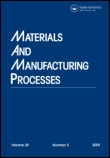
MATERIALS AND MANUFACTURING PROCESSES
Exploring Cutting-Edge Techniques in Materials Science.MATERIALS AND MANUFACTURING PROCESSES, published by Taylor & Francis Inc, is a leading journal dedicated to the dynamic fields of materials science and manufacturing engineering. Established in 1989, the journal has built a formidable reputation, exemplified by its prestigious Q1 rankings in 2023 across various categories, including Industrial and Manufacturing Engineering, Materials Science, Mechanical Engineering, and Mechanics of Materials. With a robust focus on innovative research and the latest advancements in manufacturing techniques and materials application, the journal serves as a vital resource for researchers, professionals, and students alike. The journal is indexed in renowned databases and boasts high impact factors, reflecting its influence in the academic community. Although it does not offer open access, it provides extensive platforms for disseminating crucial findings that push the boundaries of engineering and science. For those seeking impactful research contributions, MATERIALS AND MANUFACTURING PROCESSES remains at the forefront of fostering scholarly dialogue and advancing the field.

Discover Nano
Unveiling the Potential of NanotechnologyDiscover Nano is a pioneering journal published by SPRINGER, dedicated to the rapidly evolving field of nanoscience and nanotechnology. Established in 2023, this innovative platform provides an open-access forum for researchers, professionals, and students to share and disseminate cutting-edge findings in materials science and condensed matter physics. With its commitment to accessibility, Discover Nano encourages a broad spectrum of contributions, aiming to foster collaboration and stimulate discussion in this dynamic area of study. As a new entry into the academic community, the journal holds great potential for growth, aspiring to increase its visibility and impact in the materials science arena, where it currently ranks in the bottom quartile for both materials science and physics categories. Based in Germany and reaching a global audience, Discover Nano represents a significant opportunity for those looking to shape the future of nanotechnology through impactful research and interdisciplinary dialogue.

Sensors and Actuators Reports
Unleashing Innovation in Sensor and Actuator ApplicationsSensors and Actuators Reports, published by Elsevier, is a premier open access journal that has been contributing to the fields of physics, computer science, and engineering since its establishment in 2019. With its ISSN 2666-0539, this journal has rapidly gained recognition, achieving Q1 quartile rankings across multiple categories, including Atomic and Molecular Physics, Computer Science, and Electrical Engineering. By providing a platform for high-quality research and innovative findings, Sensors and Actuators Reports is dedicated to advancing knowledge in sensor and actuator technologies, which are pivotal for numerous applications in modern science and industry. The journal's performance is underscored by its impressive Scopus rankings, placing it in the top tiers across various disciplines. Open access ensures that research is widely disseminated, fostering collaboration and enabling researchers, professionals, and students alike to engage with the latest advancements in their fields.